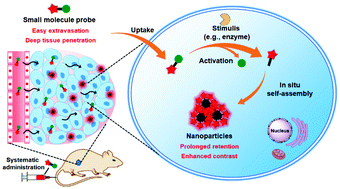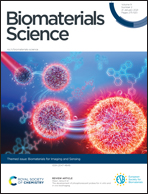Recent advances in stimuli-responsive in situ self-assembly of small molecule probes for in vivo imaging of enzymatic activity
Abstract
Stimuli-responsive in situ self-assembly of small molecule probes into nanostructures has been promising for the construction of molecular probes for in vivo imaging. In the past few years, a number of intelligent molecular imaging probes with fluorescence, magnetic resonance imaging (MRI), positron electron tomography (PET) or photoacoustic imaging (PA) modality have been developed based on the in situ self-assembly strategy. In this minireview, we summarize the recent advances in the development of different modality imaging probes through controlling in situ self-assembly for in vivo imaging of enzymatic activity. This review starts from the brief introduction of two different chemical approaches amenable for in situ self-assembly, including (1) stimuli-mediated proteolysis and (2) stimuli-triggered biocompatible reaction. We then discuss their applications in the design of fluorescence, MRI, PET, PA, and bimodality imaging probes for in vivo imaging of different enzymes, such as caspase-3, furin, gelatinase and phosphatase. Finally, we discuss the current and prospective challenges in the stimuli-responsive in situ self-assembly strategy for in vivo imaging.

- This article is part of the themed collection: Biomaterials for Imaging and Sensing


 Please wait while we load your content...
Please wait while we load your content...